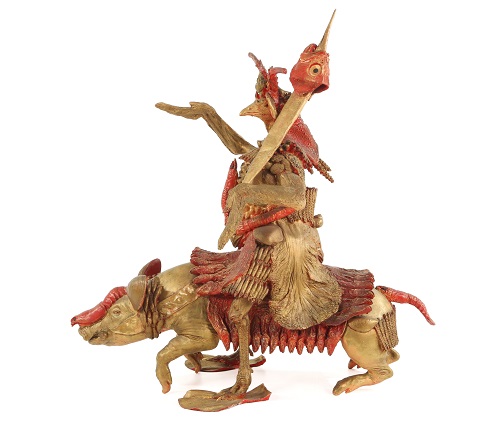Kai-Yuen, Chan
China, 1948
Born in Fujian in 1948, Chan Kai-yuen moved to Hong Kong with his family in 1962. There he studied at the Linghai Special School of Art, in 1970, he moved to France where he continued his training at the École nationale supérieure des beaux-arts in Paris. During his studies in Paris, he began to produce sculptures in plaster or wood. These represent anatomical fragments that are often linked together to form a biomorphic mass whose constituent elements are identifiable without the whole necessarily being comprehensible. The obvious desire to produce striking and destabilizing works finds even easier application when Chan Kai-yuen manages to refine his practice of casting by observing Japanese processes. This technical progress allows him to explore what has become the main subject of his work to this day. The deformations inflicted on fragmentary human bodies were intended to provoke a feeling of unease. From then on, it was the fact of giving life to inert organic matter that would generate the fascinated repulsion of the spectator. From 1983 onwards, Chan Kai-yuen used food, the imprint of which he took to reproduce them in plaster or resin. He then resorted to assembling several cast elements in order to develop the final composition, most often painted in an illusionist manner. In this context, the chicken motif became Chan Kai-yuen’s signature. He made the carcasses of this bird adopt human attitudes and staged them in a spirit strongly inspired by surrealism and, even more so, by Dadaism, as evidenced by the recurrence of Duchamp’s urinal motif. The very fact of designating chickens as works of art was a re-edition for Chan Kai-yuen of Duchamp’s founding act. Added to this was a reflection on the particular nature of the material used. The chicken is an animal whose physical characteristics have been created by man, through domestication and selection, in order to be able to raise, kill and consume it. The cadaverous nature of the material is therefore particularly important for the artist. The tension between this morbid dimension, the willingly aggressive or erotic humour of the compositions and the illusion of life deliberately undermines the seriousness of all the representations to which chickens lend themselves, whether they take the form of warriors, philosophers or bathers in a sauna. These chickens thus become for the artist incarnations of the fragility of life and the raw absurdity of the social world.
